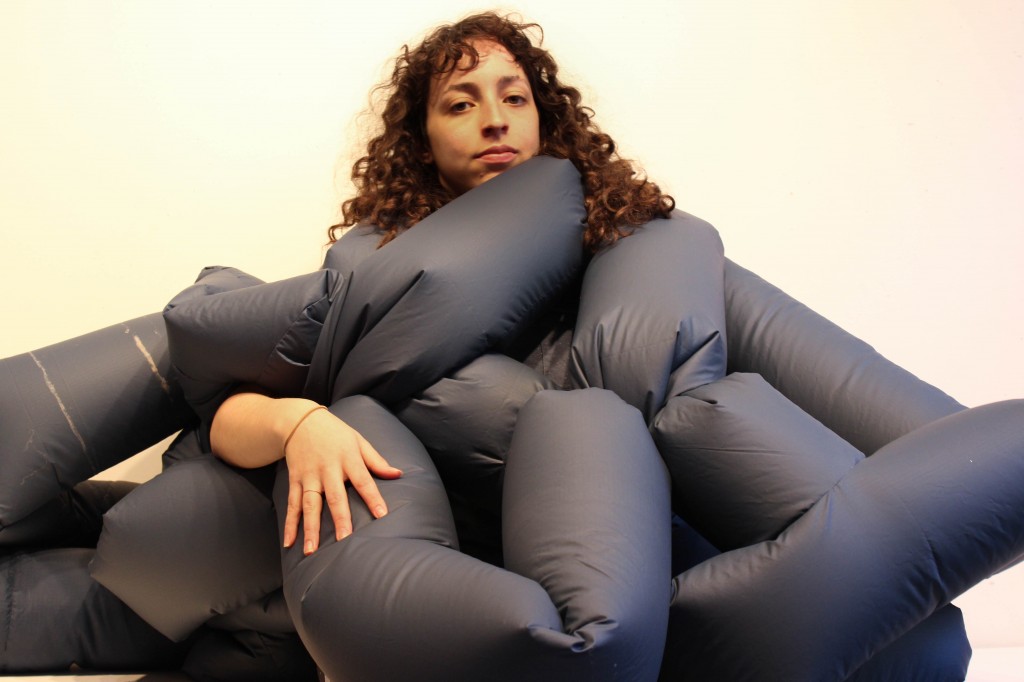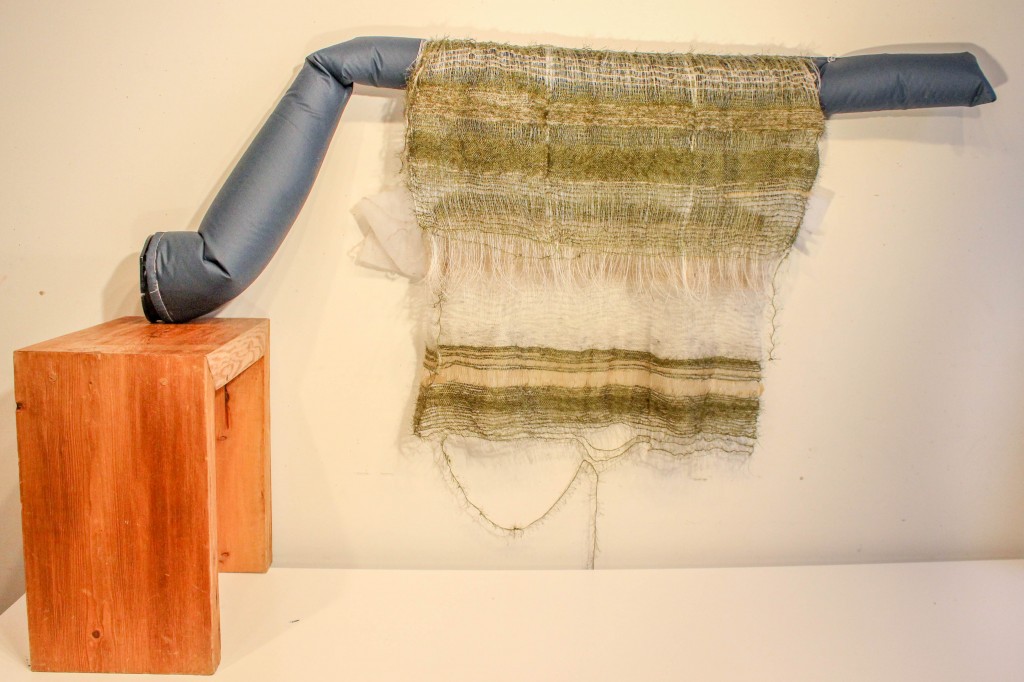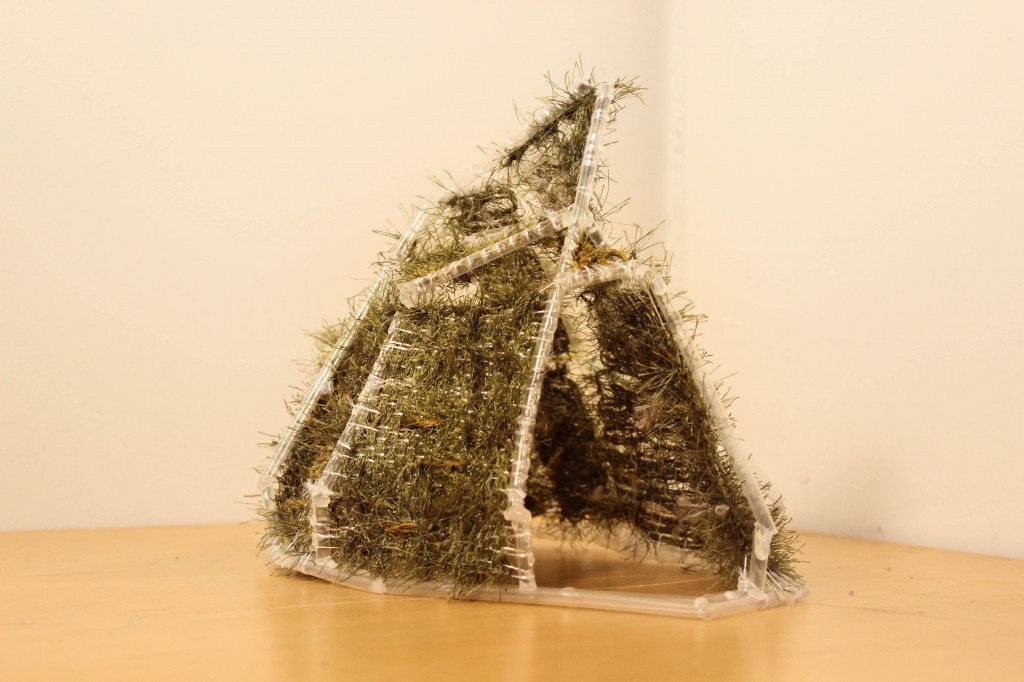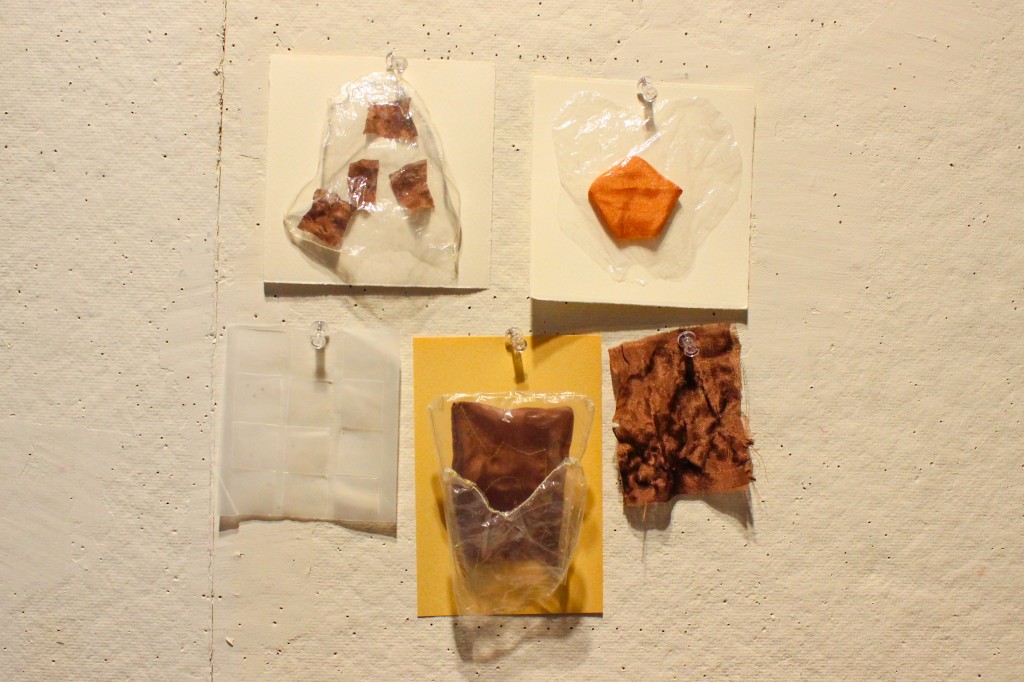AIR Artist Highlight: Colette Aliman
Weaving, sewing, dyeing… These are methods that immediately come to mind for most when they think textile arts. Our AIR Cycle 7 resident, Colette Aliman, practices all of these methods, but the medium that really stokes her passion is inflation! Ever since taking an art class on inflatables in college, Colette has been fascinated by the medium and her work reveals a playful curiosity and constant ambition to make a new discovery. Colette and I sat down to discuss the fascinating history of inflatables, and where she hopes her interdisciplinary practice will take her.
The artist inside an inflatable tube.
On her favorite moments in inflatable history: "Inflatables have traversed a wide range of needs, which I don’t think a lot of people know about, or they don’t make the connection. In the West when the world's first hydrogen balloon took off from central Paris, France in 1783, it impacted society. Even though this project was crowd-funded, outside of Paris no one knew what it was! A lot of people in outlying villages thought the balloons were demons, and they would attack them. It was also very trendy. A lot of the fashion was very bulbous, and the women would have these bulbous hairdos that kind of looked like an air balloon. During World War II, artists were used to making inflatable tanks and boats to deceive the enemy in tactical deception. These inflatables also had to have sounds so it would be believable, so sound artists would play pre-recorded soundtracks. In the counterculture of the 1960s to the 1970s, that’s when architecturally, inflatables started to come into play and mostly used for communal and experimental living and activities. One of the reasons it was able come about was because of the developing technology and the increasing availability of vinyl and PVC in the 1950's. A resurgence of inflatable architecture came to be in the 1990's and lives on today. Also the space suit uses inflatable technology, by the way. So cool!"
Colette combines weaving and inflatables, as in this study.
On inflation as performance: "Throughout the history of the engineering and use of inflatables, there has been one common element: performance. Inflatables are either theatrical in themselves or a place housing performances of varying degrees. In the past I have been mostly interested in designing spaces made from inflatables. I am currently discovering what kind of an art object inflatables are. Through personal study I have found that inflatables are always a performance because of the influx of air and air moving around to inflate nooks and crannies to their fullest potential. I think that’s a performance in itself and I find that really intriguing. You can outline mass in inflation, and that’s really hard to do with other mediums. It’s such a thin membrane, and when you see an inflatable it’s kind of like your mind’s undulating between airiness, lightness and this visual mass. We are used to big masses being heavy, it’s heavy in vision but light in feel and experience and that’s something really fascinating."
A model for a woven inflatable structure.
On the place of inflatables in textile art: "I use fabric, but fabric that is not usually used in textile art, which is polyurethane coated ripstop nylon. I guess I’m broadening the textile term a little further than what people usually think textiles are, through the use of art. I’m now researching natural fibers that I can make air-tight without using polyurethane. I’m trying to find a more natural way to inflate. Ripstop nylon and vinyl and PVC are very common materials for inflatables. Some are sew-able and some are not, some you need to use heat-press, which can be toxic. So I’d like to go past that, to ascend that. I want to discover new things and find new ways to do it, because I feel like inflatables are going to be used more in architecture and product design. They’re already used a lot, but with space travel and all these amazing things that are happening, we’re going to have to find a more viable and sustainable way to use inflation for living quarters and such things. I know that’s going out of my work because I don’t make living quarters out of inflatables, but it’s still the same process."
On how TAC has influenced her art: "It’s wonderful to be in a cohort with people that have a similar interest with you, where there’s a community that supports one another. I’ve noticed that my practice revolves around community, and it’s important for me to share. When you have doubts or fears in your private studio, you usually don’t have other people to talk about it with. But here it’s an open space, so you’re able to ask these questions that you never felt comfortable asking before, and when you ask that particular question right in that particular moment, it’s so productive! You dive deeper into your practice, and you know yourself better. I’m asking questions that I’ve never asked myself before and thus developing my practice further."
A group of collages from Colette's studio.
On her dream project: "My dream project would be a spacial structure that I would create that invokes a playful feeling within the viewer. Within this structure there would be objects that traverse furniture and units that are meant to be performed on, such as gym mats, just to play, or to lounge on. I think lounging is an interesting word. Lounging is relaxing, but lounging could be playing as well. Furthermore, it would be a nomadic space that travels with objects in which people are free to observe, play, touch, lounge, and talk. Hopefully it’s a place where people feel free to interact with each other. Textiles definitely have the opportunity to un-clam people, take them out of their shell, and possibly create a new and ever more malleable shell to come back to. Each time we climb out of our shell we learn a little more, we grow a little more, and become wiser."
To see more of Colette's work, check out her website or follow her on Instagram.



